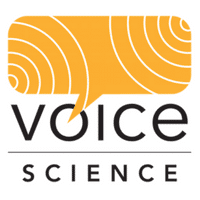Improve your PTE Fluency Skills
Follow these Voice Science strategies to improve your PTE Fluency scores. Techniques developed by a certified speech pathologist.

PTEFluency Strategies from Voice Science™
Getting your required score in the PTE Academic exam can be very stressful and you may be struggling because you don’t know how to improve your PTE Academic Oral Fluency. Usually there is so much at stake in succeeding in this exam and if you are reading this you are not the first person who has struggled to improve your PTE Academic oral fluency.
Related Read 🔗

The scoring guide for the spoken section of the PTE is based on 5 key traits: fluency, interaction, range, accuracy and phonological control.
This article will address some targeted strategies to enable you to take command of your oral fluency. But before we begin, what does oral fluency actually mean?
Watch the tutorial for this blog now from Voice Science TV 🎥
Put a Face to Voice Science
Our mini video tutorials are designed to give you actionable strategies to improve your: Speaking, Vocabulary, Voice Tone, Pronunciation, Accent, Fluency, Social Communication, Language for Leadership & Workplace Communication.
This is a short introduction to things to consider if you wish to work on your PTE Speaking. Get more by visiting us in person or online for an assessment.
Fluency for the PTE Test
The PTE Scoring guide, defines fluency as “smooth, effortless and natural-paced delivery of speech.” What a tough thing to achieve! Especially in an exam situation where nerves can get out of hand.
Let’s first consider the best case scenario. How can you achieve a rating of native like fluency? It never hurts to aim for the top. So what would native like fluency sound like? Native like fluency would be characterised by the ability to release speech with a “smooth rhythm and phrasing. There are no hesitations, repetitions, false starts or non-native phonological simplifications”. This means that when you are conveying your message out loud, nothing gets in the way. Speech rolls on at an even pace and there are no bumps, repeated words, “ums”, “ahs” or redundant sounds.
Now, try and consider the following as your worst case scenario.
“The graph shows… em… the errr… the features of, the features of the… uh, features of the econ-… economic structure.”
When sending your message, it became cluttered. Perhaps the speed of speech got out of control. Maybe you struggled with pronouncing a word so you tried again. You might have forgotten your train of thought, or maybe you simply struggled to understand the graph. Whatever it was, the words got jumbled and the message lost its calm rhythm.
Did you know that a few simple strategies can dramatically change the way you release your message into the sound wave, thus enhancing your fluency?
PTE Fluency Techniques to Improve 💡
Here are a few techniques to improve your oral fluency for the PTE Academic. It is not a complete list, but they will give you a few ideas to eliminate error and improve your command of fluent speech when under pressure in the test situation.
Reduce fillers
How to stop saying, um, like, yeah and you know what I mean?
It might seem hard to abandon these redundant words and filler sounds, but it is possible.
What are Fillers?
Fillers are words, sounds and phrases that are immediately filtered out of your message by your listener. Speaking with a large number of fillers clutters your message so it is good to keep them at a minimum in every day speech but for the exam try to stop using them altogether. Fillers fill up the sound wave with noise, making your content less efficient to decode . This is a very important point. Using fillers in your PTE Speaking exam interferes with the computer based scoring for speech fluency.
There are three main types of filler behaviour.
“Um” and “totally” and “you know what I mean” are not all the same thing.
Here are some key definitions. ⬇
Filler sounds: um, ah, errr, eh, em (These sounds can be first language dependent as well).
These sounds can not be found in a dictionary, obviously.
Filler words: basically, literally, like, yeah, totally…
These sounds are often present in dictionaries and are usually adverbs. Although they can be found in a dictionary there is no reason to use them in every sentence!
Filler phrases: you know, you know what I mean, what I am trying to say is…
These threads of speech often contain real words, but lack real intent. If someone were to just utter a filler phrase, you would have no idea what they actually mean, even though they have said to you “you know what I mean”. Get it?
How to Reduce Fillers and Boost PTE Fluency
Before you feel like this is impossible to fix… know your enemy. Identify the key fillers you use and start recalibrating your verbal messages. Try to enhance your vocabulary and word finding abilities, as this will make you more flexible and able to discuss a wide range of matters without hesitations in the exam setting. It’s time to get strategic.
What are your Key Fillers?
Choose a topic that you know nothing about. Record yourself speaking about this topic for a minute. Listen back and note down key fillers you are using. Remember because this is a foreign, rarely discussed topic, there will be potentially a higher number of fillers and hesitations throughout. Take stock, as knowing your fillers is the first step to reducing your reliance on them.
Quantify your fillers under the headings of Fillers Sounds, Filler Words and Filler Phrases.
Analyse your use of fillers
With the same track, consider the following details:
What preceded your filler?
- Word finding difficulties?
- Fast speech rate?
- Concept and content creation difficulties marked by sentence breakdown or sudden topic change?
- Anxiety?
It may be some or all of the above.

Consider the type of fillers and fix the behaviour
Trouble shoot the filler error in a targeted way.
Filler sounds: these sounds are often ingrained and habitual. More often than not, we usually are not even aware that they are occurring.
The fix: Utilise a slower speech rate and try to link your words together calmly. There is time to get your message across in the exam. Work with a speech pathologist to learn some tips on how to have control over your speech rate to better support your message.
Filler words: These words will normally occur when you are trying to find a word.
The fix: Take time to pause and locate the word but without feeling pressure to start again suddenly as this can create error. If you have no chance to find the word you need, continue talking as though nothing interrupted the flow of your ideas. Try not to repeat the same sentence again or have a few attempts to locate the word or the system will register a false start which can reduce your fluency ratings.
Filler phrases: Like filler sounds, filler phrases are often coded deeply as a pattern of verbal behaviour. They can become like your favourite old pair of shoes.
The fix: Try to consider what filler phrases you use and consider that it might be time for an upgrade. The reliance on filler phrases to send your message reduces the intensity and impact of the message as the listener is bombarded with repeated words. Think of the plethora of words at your disposal. The Global Language Monitor registered a sum total of 1,025109.8 words in their last survey conducted in January, 2014. A new word emerges every 98 minutes, which amounts to an average of 14.7 words being born per day! You are spoilt for choice. Strengthen your vocabulary and actively practice generating streams of speech on topics you know little about. This will enhance your ability to communicate without speech hesitations.
Consider the type of fillers and fix the behaviour
Force yourself to practice talking about a variety of topics that you know very little about without an audience. Keep the topic duration to one minute maximum and record or film yourself while undertaking this. You might wish to discuss the dietary rituals of figure skaters, the non-verbal communication approaches of walruses, the childhood of Leonardo da Vinci, whatever lies outside of your expertise, but not interest. It is important the topic is unfamiliar but engaging. This way, you can learn to articulate verbal output when you are stumped for ideas or sinking in an awkward communication situation. Go out and buy yourself a copy of Monocle, Time Magazine or even New Scientist and practice describing infographics, diagrams or charts out loud on demand. It is important to be able to describe visual information as well on demand.
It also helps you to develop the ability to create engaging verbal output creatively. Use this activate to become adept at expressing speculative ideas and to trouble shoot and brainstorm concepts that you have not ever given much thought as this simulates situations in daily life when ideas do not come easy and where you are most likely to unleash the fillers.
If you’re wondering at this point, ‘how do I know exactly when and where to use the Schwa in English words and sentences?’, our Speech Pathologists have done that work for you!
We use evidence-based methods to systematically equip you with practical pronunciation tools and strategies to identify these in your English speaking. We offer online pronunciation training that is tailored to your specific needs and goals.
Voice Science © Oral Fluency Techniques
These will ensure you maintain an appropriate and functional speech rate to give you time and scope to select the most powerful message.
Contact Voice Science for a training session in our evidence based method of improving oral fluency. We also can assist in improving for other areas of speaking for the OET Academic exam.
Improve your PTE Fluency with Voice Science
Our team of speech pathologists offers a unique, science based approach to assist you with strategies for PTE Fluency.
Stuck? Try a quick query form
This form will take you from some FAQ’s about our courses in a fun way.
You will also get the chance to enter specific questions, that our team will respond too. If you can’t find an answer to your question, try this form, or better still give our friendly receptionists a call.
English Pronunciation Tips
Find bonus tips for a mix of different language backgrounds
See loads of our accent tips for non-native speakers.
We have heaps of tips for many language backgrounds including:
- Thai Accent Reduction Tips
- Japanese Accent Reduction Tips
- Arabic Accent Reduction Tips
- Bulgarian Accent Reduction Tips
- Russian Accent Reduction Tips
- Mandarin Accent Reduction Tips
- Cantonese Accent Reduction Tips
- Vietnamese Accent Reduction Tips
- Spanish Accent Reduction Tips
And so many more!

